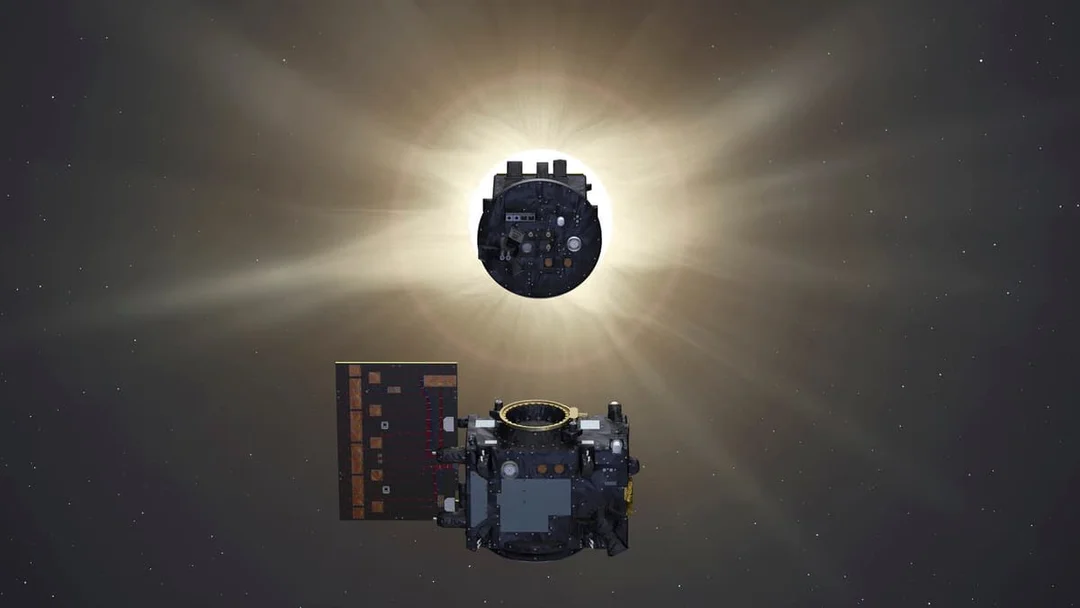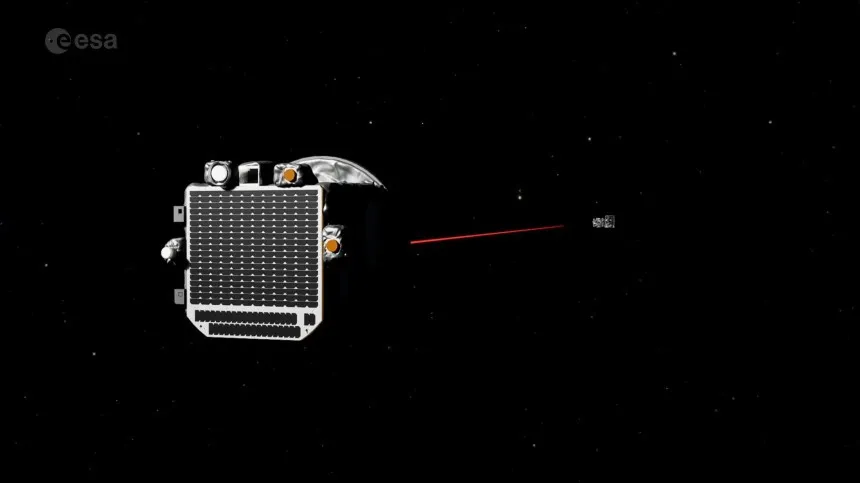
Proba-3 Achieves Unprecedented Precision in Space Formation Flying: A New Era for Solar Observation
In a groundbreaking achievement, the European Space Agency's (ESA) Proba-3 mission has successfully demonstrated autonomous, precision formation flying in space, achieving millimeter-level accuracy. This feat, never before accomplished, paves the way for future multi-spacecraft missions and advanced astronomical observations.
The Proba-3 mission consists of two satellites, the Occulter and the Coronagraph, which maintain a precise distance of 492 feet (150 meters) in a highly elliptical orbit. This configuration effectively simulates a single, massive instrument designed to study the Sun's elusive corona. The critical aspect of this mission is the alignment precision: the Occulter blocks the Sun's glare, allowing the Coronagraph to capture detailed images of the faint solar corona.

After initial positioning by ground control, an autonomous system of cameras, LEDs, and laser rangefinders takes over, ensuring the Coronagraph stays within the Occulter's shadow. A key component is the Fine Lateral and Longitudinal Sensor (FLLS), a laser system that detects even the slightest positional shifts, maintaining alignment with millimeter accuracy. This same technology is slated for use in NASA and ESA's next-generation gravitational wave observatory, LISA, at much greater distances. According to project manager Damien Galano, the mission achieves "millimetric accuracy in range, and sub-millimetric in the lateral position."
The mission's success hinges on a sophisticated interplay of technologies. A wide-angle camera on the Occulter tracks flashing LED lights on the Coronagraph. As the satellites draw closer, a narrow-angle camera locks onto the same lights for more refined alignment. The FLLS provides the final millimeter-level precision, firing a laser beam at the Coronagraph's retroreflector.

The Proba-3 mission represents a significant leap in orbital choreography. The paired Proba-3 satellites will have a highly elliptical orbit with an apogee (or top of orbit) of about 60,000 km and perigee of 600 km. Coronagraph observation based on forming an artificial eclipse between the two satellites as well as active formation flying experiments taking place towards apogee, with passive formation flying taking place as the satellites circle closer to Earth.
Furthermore, a shadow position sensor ensures that the Coronagraph remains in the Occulter's shadow by measuring light intensity around the coronagraph aperture. Esther Bastida Pertegaz, Proba-3 systems engineer, noted that, "Combining all these sensors… the formation is stable beyond expectations."
Launched from India’s Satish Dhawan Space Centre, the Proba-3 mission involved collaboration from 29 companies across 14 countries. While the initial goal of achieving a 5-centimeter shadow on the Coronagraph from the Occulter's 1.4-meter disc remains, the demonstrated precision hints at the possibilities for future space endeavors.
With Proba-3 setting the stage, what new frontiers in space exploration and observational astronomy will this technology unlock? Share your thoughts and predictions in the comments below!